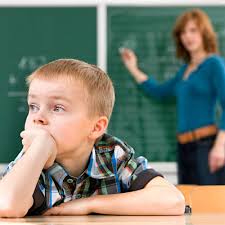Attention Deficit Hyperactivity Disorder (ADHD)
ADHD is not just a childhood disorder. Although the symptoms of ADHD begin in childhood, ADHD can continue through adolescence and adulthood. Even though hyperactivity tends to improve as a child becomes a teen, problems with inattention, disorganization, and poor impulse control often continue through the teen years and into adulthood.
Many toddlers and young children are restless and excitable. This is normal, as they have lots of energy and are constantly learning about the world and moving from one experience to the next.
However, some children are extremely overactive and do not grow out of this type of behaviour. It can be very difficult to keep them safe and calm. They may be diagnosed with attention deficit hyperactivity disorder (ADHD) or attention deficit disorder (ADD), if they do not show the symptoms relating to hyperactivity.

- Issues around attention: Problems with concentration, short attention span, getting distracted, finding it hard to follow instructions, losing things or not being organised.
- Issues around hyperactivity: Struggling to sit still, finding it hard to keep sitting down, fidgeting and moving a lot, talking or making noises, fiddling with things.
- Issues around impulsiveness: Interrupting other people, finding it hard to wait their turn, doing things or saying things without thinking through the consequences, having a reduced sense of danger.
Children with ADHD find it really hard to control their behaviour and have problems concentrating. They may do things without considering the consequences, and then get into trouble. They may have problems at school because they cannot concentrate on their work, (whatever their level of intelligence) and they can have friendship problems if they are not able to listen to their peers or wait their turn. ADHD is diagnosed in around one to two children out of every 100. It is more common in boys than girls. It is thought to be caused by problems in the part of the brain which controls impulses and concentration, but other factors may also have an impact. There is probably also a genetic element, as ADHD can run in families.
ADHD is commonly treated with medication, education or training, therapy, or a combination of treatments.
Signs and SymptomsIt is normal for children to have trouble focusing and behaving at one time or another. However, children with ADHD do not just grow out of these behaviors. The symptoms continue, can be severe, and can cause difficulty at school, at home, or with friends.
A child with ADHD might:
- Daydream a lot
- Forget or lose things a lot
- Squirm or fidget
- Talk too much
- Make careless mistakes or take unnecessary risks
- Have a hard time resisting temptation
- Have trouble taking turns
- Have difficulty getting along with others